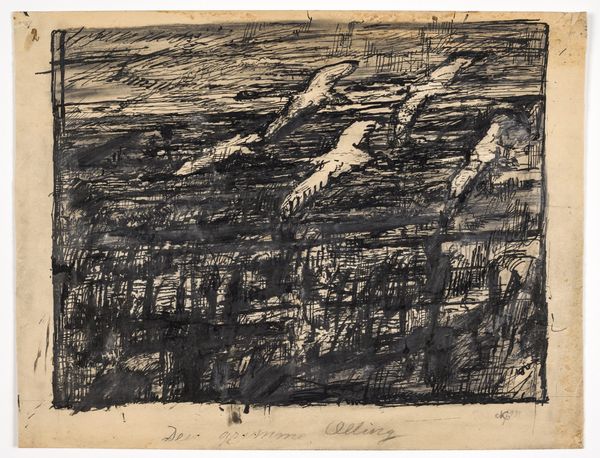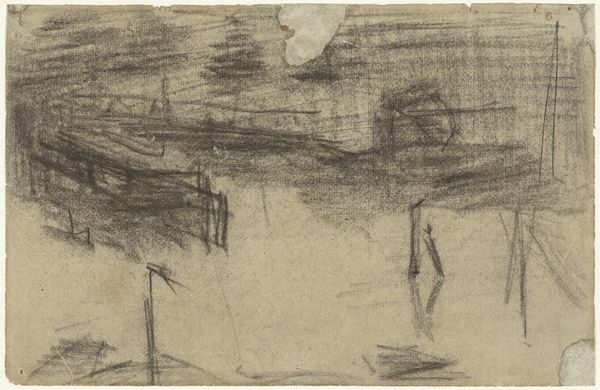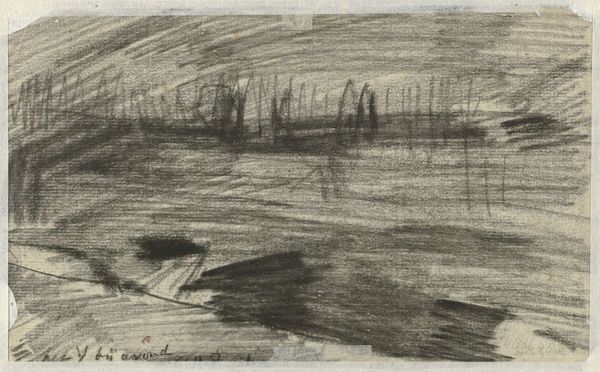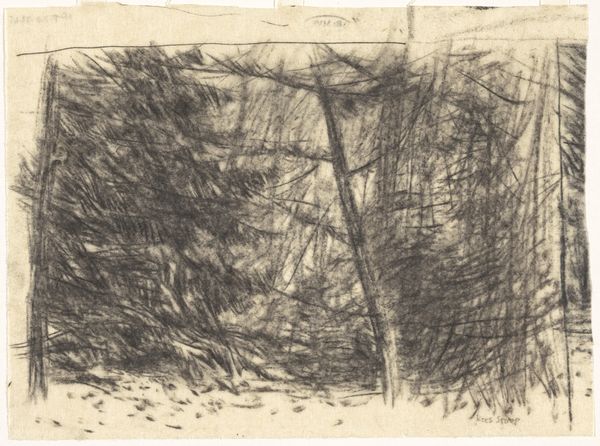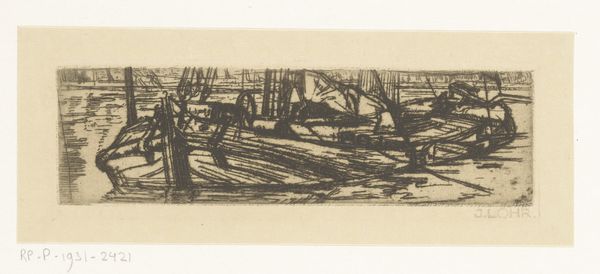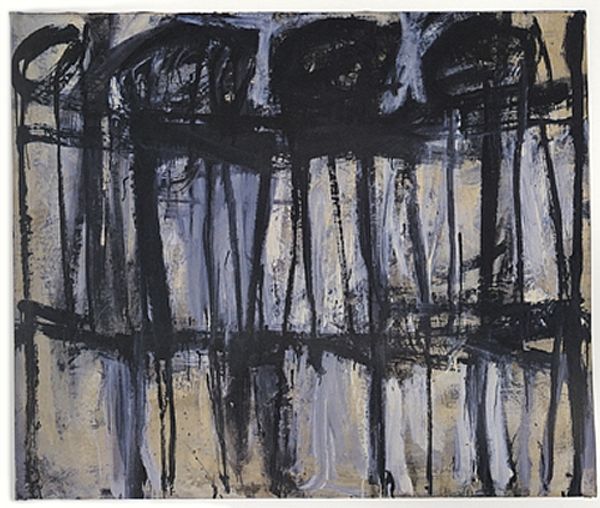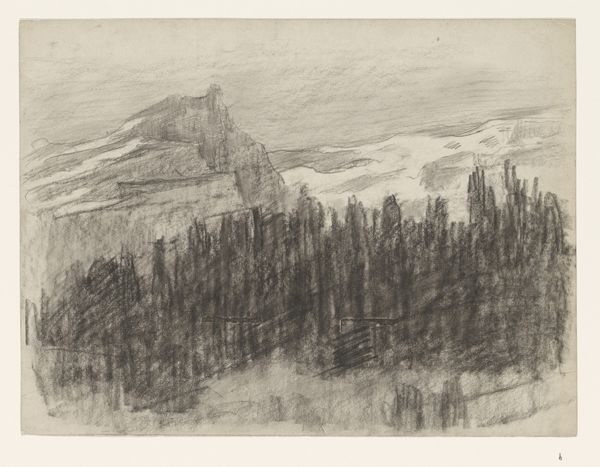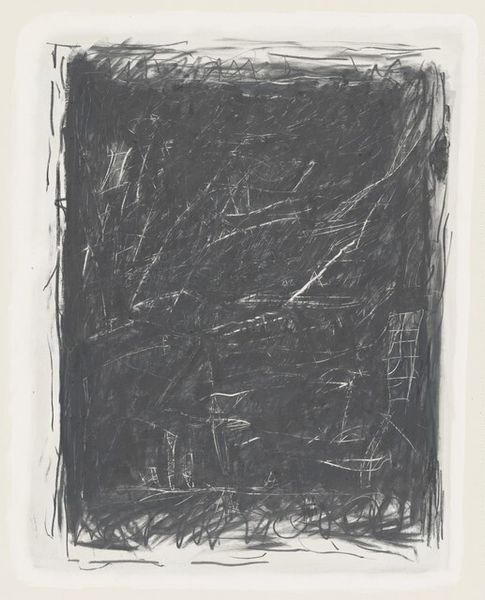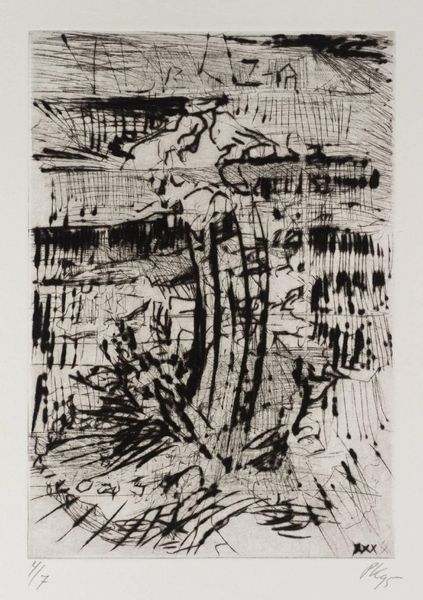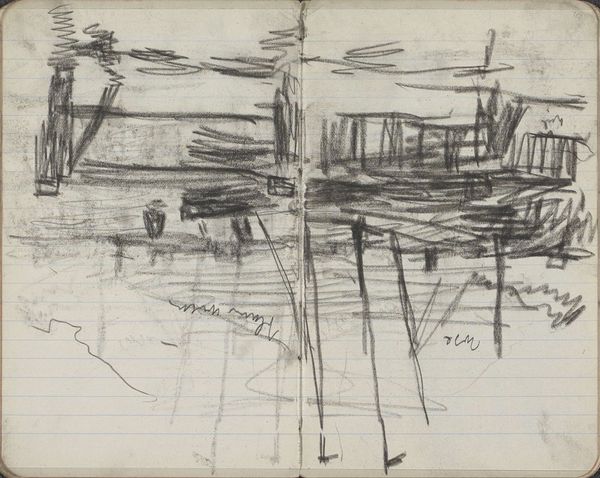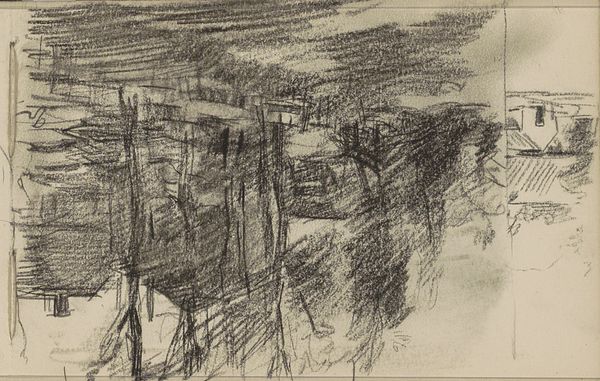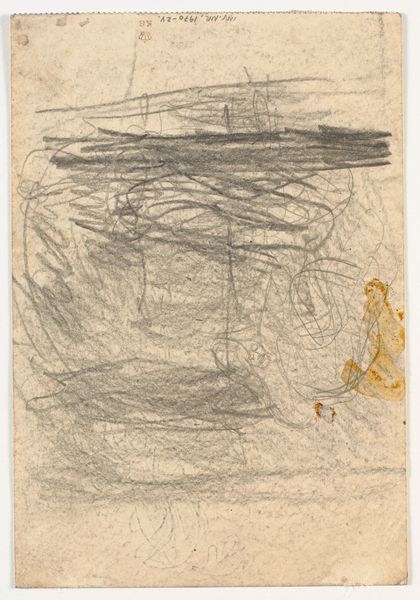
drawing, ink
#
drawing
#
ink painting
#
landscape
#
ink
#
abstraction
Dimensions: 149 mm (height) x 159 mm (width) (bladmaal)
Editor: Here we have Christian Kongstad Petersen's "Pennekrads" from 1932, an ink drawing. It strikes me as quite dramatic, almost turbulent. All those dark, sweeping lines in the sky. How do you interpret this work? Curator: I see this piece as deeply embedded in the interwar period, a time of social upheaval and political anxiety. What appear as mere dark, sweeping lines might actually represent the storm clouds of the impending Second World War. Think about how abstraction became a powerful visual language to express these anxieties that straightforward realism couldn't capture. Does knowing this, change how you read those ‘sweeping lines’ now? Editor: Definitely, it makes me think of how art reflects broader historical currents. But is there anything specific about the art world in Denmark that would have influenced this work? Curator: Absolutely. The Danish art scene was grappling with the tension between embracing international avant-garde movements and maintaining a distinct national identity. There was significant debate about the role of art in a rapidly changing society. Should it serve a didactic purpose or explore more experimental modes of expression? “Pennekrads”, with its abstract leanings, participates in this dialogue. Does this tension help you understand Petersen’s choice of abstraction, now? Editor: Yes, it gives the artwork an extra layer of meaning to see how artists position themselves and their work within the ongoing debates. I guess I was reading it very individualistically. Curator: Precisely! Remember, museums and art institutions shape these interpretations over time as well. Our reading today isn't just about Petersen's intentions but also about how his work has been historicized and what cultural meanings we project onto it now. Editor: That's a fascinating reminder. I'm much more aware of the socio-political context and the institutional framing that gives depth to what could seem a very simple landscape. Thank you.
Comments
No comments
Be the first to comment and join the conversation on the ultimate creative platform.
